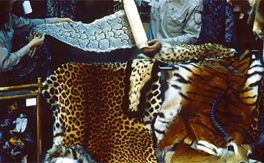World wildlife crime report: trafficking in protected species
 This first global assessment of its kind report highlights how the poaching and illegal trade of thousands of species worldwide presents real environmental dangers and ultimately undermines the rule of law by potentially fuelling conflict.
This first global assessment of its kind report highlights how the poaching and illegal trade of thousands of species worldwide presents real environmental dangers and ultimately undermines the rule of law by potentially fuelling conflict.
UNODC launched its inaugural World Wildlife Crime Report, highlighting how the poaching and illegal trade of thousands of different species across the globe not only present real environmental dangers but ultimately undermine the rule of law by potentially fuelling conflict. The report also urges shared responsibility in tackling this crime given how products made from illicit flora and fauna such as fashion items, furniture, food, and pets, may be hidden in plain sight. The report was developed by UNODC with data provided by partner organizations under the International Consortium on Combating Wildlife Crime (ICCWC), including the Secretariat of the Convention on International Trade in Endangered Species of Wild Fauna and Flora (CITES) and the World Customs Organization (WCO). One of the main messages the new report aims to convey is that wildlife and forest crime is not limited to certain countries or regions, but is a truly global phenomenon. The report looks at eight case studies of species products sorted by seven industrial sectors that make use of wild sourced materials across the world.

